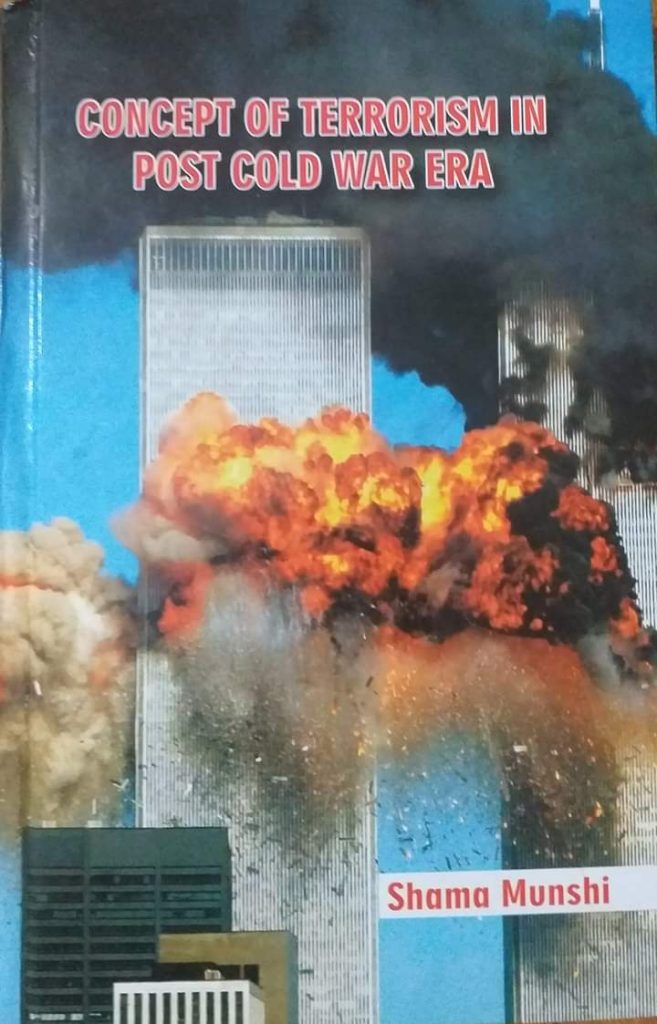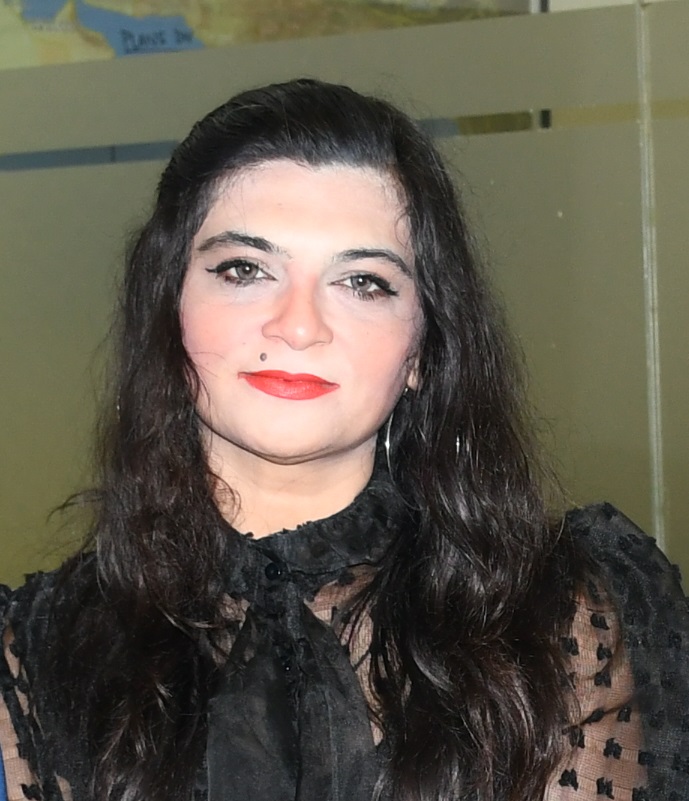BOO REVIEW
Reviewed by Dr Yousaf Alamgirian

Mass communication is a widespread term these days, however, one of its major sources i.e. books is usually ignored. Books play a major role in stating and clarifying narratives that any other source of the communication might miscarry. Events from history have proven the importance of books that had been published as a response to the ongoing misleading events and their repercussion. Resultantly, the importance of books will remain intact, no matter how advanced technology gets. Reading books as a hobby as well as for a source of information is and will continue to be a part of common practices until the man yearns for knowledge and his soul yearns for a delightful feast in the form of a good read.
Recently, I came across a non-fiction book named “Concept of terrorism in post-cold war era” by Ms ShamaMunshi who is a renowned analyst, social worker as well as a media person. Being a bilingual writer, she has been an active contributor to various national and international forums. In her book, she has thrown light on terrorism and narrated how it had been shaped and propagated during the post-cold war era. The postmodern idea of terrorism has been the centre of discussion, mainly analysing how the word ‘terrorism’ which had a totally different connotation prior to the twin attack of 9/11 was reshaped afterwards. Discussing the repercussion this contextualization of terrorism with Islam had, she brought to light some major cases through the examples of Iraq and Libya.
The things discussed earlier might seem already known to many of the readers but the writer has built the context of the whole discussion in a decent academic way. From the initial romanticism of Islamic countries with the West during the cold war against the Soviet Union, to the war on terror in Afghanistan leading to a massive wave of Islamophobia, the writer has discussed the complete topsy-turvy voyage with required references. Focusing on the linguistic terminologies, that have evolved or been given a negative connotation over time such as fundamentalism, and Jihad have also been discussed in the book. The writer has emphasized and condemned the association of terrorism with Islam, as it is the vested interests of superpowers cloaked in the guise of Islamophobia.
In short, this book is a source of awareness, and a response to the ongoing Islamophobia in the world, as well as a portrayal of the true image of Islam. Islam, the religion of peace, preaches humanity, pluralism and harmony and it has no place for hate at all. Hence, the author Ms ShamaMunshi must be applauded for the publication of such a book which advocates the true face of Islam as a religion.
The book is published by Loheadab Publication Karachi.

















